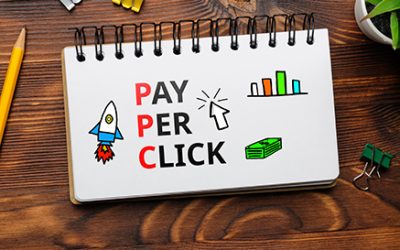To stay competitive, digital marketing for healthcare is vital for all entities in the healthcare business sector. Increasing importance is given for online marketing now because most people go online to find information about healthcare, and having your website show up among the top organic search engine results is vital. Today, every second 2.3 million searches are conducted on Google as it is the king of search engines. Google Ads are listed on the SERPs (search engine results pages), and are an effective way of driving relevant traffic to your website.
Google Ads are paid advertisements that appear at the top position in the search results page of Google with the use of Google AdWordsor ads that appear on other websites through the Display Network and Google’s AdSense program. The sponsored results will have label in green which says “Ad.”The results that appear below the ads are organic search results.
How do Google Ads work?
Marketers turns to Google Ads to advertise their products and this leads to competition in almost all products and services category. So, Google conducts an auction and decides which ads need to be shown. Whenever a Google search is performed, an auction takes place. It helps to decide which ads will appear for a specific search and in which order those ads will show on the page. The ads that win the auction are placed highest among the results and have the highest Ad Rank. Ad Rank refers to a value that determines your ad position among other ads. It is calculated by using your bid amount, the components of Quality Score and the expected impact of extensions and other ad formats. Quality Score is an aggregated estimate of your overall performance in ad auctions that consider the quality of your ads, keywords and landing pages. So, once you have a good quality score, let’s see how you should prepare your Google Ads for 2020, as suggested in a wordstream.com article.
- Make a list of KPIs: KPIs or Google ads key performance indicators are metrics that help you determine the success rate of Google ads. KPI differs from business to business depending on what they want to gain from Google ads. For example, focus on KPIs like clicks and click through rates if you want to get more traffic, and for content downloading, focus on KPIs like conversion rate, and cost per conversion. So knowing what you want from Google ads, you will know the important KPIs that you need to focus on. Create a saved set of columns that show KPIs that are important to you. When viewing any set of data (campaigns, ad groups, ads, etc.) you’ll see a “columns” button at the top left of the chart. Click on that and select “Modify columns.” Choose your KPIs and other metrics, then save the column and name it.
- Look for KPIs that are low performing: Conversion rate, click-through rate, cost per action etc are some of the KPIs and it is important to know how these KPIs are performing. If you are finding it difficult to come up with benchmarks to aim for, then take a look at averages for competitors in your industry. The benchmarks may differ based on what you are promoting. After identifying your KPIs, take measures to improve their performance. For example, if your CTR is low then it could be because your ad copy is not resonating with your audience and you need to work on it. Similarly, if your conversion rate is low then you must work on your landing pages.
- Check your bidding strategy: There are two categories in bidding strategy in Google Ads – manual bidding and automated bidding. Bid strategies are controlled based on campaign level. To switch, click on “Settings” under any campaign. Under “Bidding,” click on “Change bid strategy.” After clicking that you will find a lot of options. An automated bidding strategy is less time-consuming and you’ll need to let Google know what you want to focus on such as conversions, conversion value, clicks, or impression share. After selecting the option, you have to fill out some information on your target or maximum spend based on whichever goal you’re focusing on. This means that you trust the Google algorithm to adjust bids for you based on their performance predictions. Manual bidding on the other hand is somewhat time consuming and here you can decide yourself which ad groups and keywords you’d like to adjust bids on based on your own analysis of their performance. Therefore, this option gives you good control over your bids. In short,the bid strategy you choose to adopt would depend on how much time and effort you are willing to spend on bidding, and the extent of control you wish to have over your bids.
- Use some negative words: This will help avoid wasted expenditure within your Google Ads account. The search terms that result in your ad being shown keep on changing. So, looking through them, picking out totally extraneous ones and adding those negative keywords are crucial. Consider negative keyword lists for each campaign, as well as a keyword list for your entire account. If you find a topic that is irrelevant to the ads but relevant for your business, commonly shows up you can create a new campaign or ad group for that topic.
- Add a retargeting audience: Tagging your site with Google tracking Pixel helps to get enough traffic to meet Google’s requirement. It also helps to refresh your Google Ads account by retargeting audience. Retargeting audience helps show your ads to users that have previously visited your website. These audiences are configured at campaign level. Use creative ways to retarget your website visitors to reach users who have already shown interest in your brand, product, or services.
- Make bid adjustments on devices: The best way to control your bidding is adjustment on devices based on their performance. This is controlled on the campaign or ad group level. Device settings can be adjusted by navigating to a campaign and clicking on “Devices.” Make sure that your column is configured to show your KPI and compare performance data for each device and then increase or decrease your bids.
Google Ads are useful for businesses to help them meet their goals to increase brand awareness and revenue. Healthcare businesses looking to enhance their reputation and brand can utilize a reliable medical SEO service to get their Google Ads ready.




